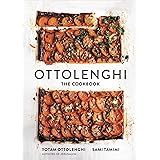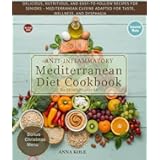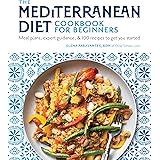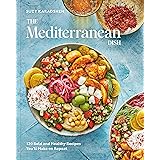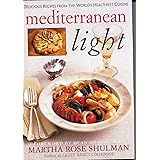The quest for healthy aging often leads us back to the fundamentals of nutrition, and few foods embody this principle as perfectly as sardines. As Dr. Valter Longo highlights in the accompanying video, these small, unassuming fish are packed with nutrients crucial for longevity, from heart health to bone strength. However, the path to unlocking these benefits, especially for seniors, isn’t always straightforward. Not all canned sardines are created equal, and understanding the nuances of how they’re processed, packed, and sourced can make all the difference in turning a potential superfood into a true ally for healthy aging.
For individuals navigating their later years, every dietary choice carries significant weight. The body’s systems become more sensitive, resilience can diminish, and the cumulative effects of decades of eating habits become more pronounced. This guide delves deeper into the critical factors discussed in the video, providing a comprehensive roadmap for seniors and their caregivers to select the absolute best sardines for seniors, maximizing their health benefits while avoiding common pitfalls.
The Sodium Trap: Protecting Your Cardiovascular Health with Smart Sardine Choices
One of the most immediate and impactful concerns for seniors consuming canned goods is sodium content. While salt serves as a natural preservative, enhancing flavor and texture, its excessive presence in many canned sardine products poses a significant threat to cardiovascular health. For younger individuals, a high-sodium meal might be buffered, but for those in their 60s, 70s, or 80s, the body’s ability to manage salt changes dramatically.
Understanding Sodium’s Impact on the Aging Body
As we age, blood vessels naturally stiffen, and the kidneys become less efficient at excreting excess sodium. This means that a seemingly small amount of added salt from a single can of sardines can push blood pressure higher, sometimes with dangerous consequences. The American Heart Association recommends that seniors and individuals at risk of hypertension limit their sodium intake to around 1,500 milligrams per day. Consider that a single tin of conventional sardines can contain anywhere from 300 to over 500 milligrams of sodium—potentially more than a third of the daily allowance. This threshold is easily surpassed if other processed foods or condiments are consumed throughout the day.
Elevated sodium levels force the body to retain more water to dilute the salt concentration, increasing blood volume. This extra fluid places strain on blood vessel walls, raising blood pressure. Over time, this consistent pressure can damage delicate capillaries in the brain, contributing to cognitive decline and even increasing the risk of stroke. It can also strain the kidneys, progressively reducing their function, and compel the heart to pump harder, potentially leading to a thickening of the heart muscle and an increased risk of heart failure. For seniors already managing borderline hypertension, regular consumption of high-sodium sardines acts as a silent, yet very real, threat.
Navigating Sodium Levels: Practical Solutions
The good news is that avoiding this risk doesn’t mean forsaking sardines entirely. Many brands now offer low-sodium versions, often labeled as “no salt added” or “lightly salted.” While fish naturally contains some sodium, these options significantly reduce the overall intake, making them far more manageable for seniors. Furthermore, choosing sardines packed in water or extra virgin olive oil, specifically without added salt, can also contribute to a lower sodium profile.
It’s crucial to read food labels carefully, making this an essential practice for all seniors. While taste buds adapt to stronger flavors over decades, they can also recalibrate within a few weeks of reducing sodium intake. This adjustment allows the natural, rich umami taste of sardines for seniors to shine through, especially when enhanced with healthy, low-sodium alternatives like fresh lemon juice, herbs such, as parsley or dill, and a drizzle of quality extra virgin olive oil. This approach aligns with the Mediterranean diet, which emphasizes natural flavors over excessive salting, promoting a dietary pattern that supports healthy aging.
The Right Packaging: Oils, Sauces, and Longevity in Your Sardines
Beyond sodium, the liquid in which sardines are packed is another critical factor impacting their health benefits. This choice, whether it’s extra virgin olive oil, refined vegetable oils like sunflower or soybean oil, or various sauces, profoundly affects cardiovascular health, metabolic function, and long-term well-being. For seniors whose bodies are more susceptible to oxidative stress and inflammation, the right choice can significantly bolster longevity.
Extra Virgin Olive Oil: A Synergistic Superfood Pair
Extra virgin olive oil (EVOO) has long been celebrated as a cornerstone of the Mediterranean diet for its profound health benefits. It’s rich in monounsaturated fats, polyphenols, and powerful antioxidants that actively reduce inflammation, protect arterial health, and support optimal brain function. When sardines are packed in EVOO, the fish’s omega-3 fatty acids (EPA and DHA) and the oil’s oleic acid and polyphenols work together synergistically. This combination creates a potent anti-inflammatory and protective environment within the body.
For seniors, this means a reduced risk of atherosclerosis, improved cognitive preservation, and support for joints and skin, which naturally become more vulnerable with age. EVOO also enhances the absorption of fat-soluble vitamins found in sardines, such as vitamin D and vitamin E, significantly boosting their nutritional payoff. Choosing EVOO-packed sardines for seniors is a proactive step towards comprehensive health.
The Pitfalls of Refined Vegetable Oils and Processed Sauces
In stark contrast, refined vegetable oils like soybean oil or sunflower oil are often used in cheaper sardine products. These oils are high in omega-6 fatty acids. While omega-6s are essential, the modern diet typically contains an excess of them relative to omega-3s, which promotes chronic inflammation. For seniors, this low-grade inflammation is a silent driver of numerous age-related diseases, including heart disease, arthritis, diabetes, and neurodegeneration. When anti-inflammatory sardines are paired with pro-inflammatory refined oils, their benefits are diluted, and sometimes even reversed.
Moreover, refined oils are often processed under high heat, which strips them of beneficial antioxidants and can leave behind compounds that oxidize easily. These oxidized compounds generate free radicals in the body, which damage cells and accelerate aging. Sardines stored in stable oils like EVOO better preserve their delicate omega-3s, whereas refined oils can degrade these vital nutrients. This is especially crucial for seniors, as omega-3s are vital for brain function, eye health, and reducing systemic inflammation.
Sardines packed in sauces, such as tomato or mustard, present another layer of concern. While a simple tomato sauce can offer lycopene, many canned versions come with added sugar, excessive salt, or undesirable preservatives. Sugar contributes to blood glucose spikes and insulin resistance, while preservatives can irritate digestive systems or burden the liver and kidneys. Mustard-based sauces often contain artificial colorings and stabilizers that offer no health benefit and can detract from a truly clean, nourishing food. For optimal health, seniors should prioritize sardines with the simplest ingredient lists, ideally packed in water or extra virgin olive oil.
Beyond Protein: Sardines for Robust Bone Health in Later Life
The skeletal system is a dynamic structure, constantly remodeling itself. However, with age, bone breakdown often outpaces formation, leading to weaker, more fragile bones—a condition known as osteoporosis. For seniors, a seemingly minor fall can result in serious fractures, significantly impacting independence and quality of life. Sardines, when chosen correctly, offer a unique and powerful contribution to maintaining strong bones.
The Bioavailable Bone Builders: Calcium and Vitamin D
Seniors require a steady intake of calcium to preserve bone density, support nerve transmission, muscle contraction, and heart rhythm. However, calcium intake often declines with age due to reduced appetite, dental issues, or difficulty digesting dairy. Sardines with their soft, edible bones provide a highly bioavailable, non-dairy source of calcium. Unlike many calcium supplements, which can cause digestive issues or kidney stones, the calcium in sardines comes naturally packaged with phosphorus, vitamin D, and other trace minerals that work synergistically in the bone-building process. A single serving of sardines with bones can provide more calcium than a glass of milk, making them an invaluable alternative for those with lactose intolerance or other dietary restrictions.
Furthermore, sardines are a natural source of vitamin D, which is absolutely critical for calcium absorption. Without adequate vitamin D, much of the calcium consumed simply passes through the body unused. Seniors are particularly susceptible to vitamin D deficiency due to reduced skin synthesis from sun exposure and less efficient conversion in the liver and kidneys. Thus, the inherent combination of calcium and vitamin D in sardines addresses two common age-related deficiencies in one potent food.
The Role of Omega-3s and Avoiding Calcium Loss
The omega-3 fatty acids in sardines also play a role in bone health by reducing inflammation, which can otherwise accelerate bone breakdown. Studies suggest omega-3s support bone mineral density and may help reduce fracture risk. In this way, sardines provide holistic support for the skeletal structure and the broader environment that influences bone maintenance.
However, it’s vital to recognize that boneless sardines, while still nutritious for protein and omega-3s, lose the critical advantage of bone-derived calcium. Seniors opting for boneless varieties miss out on one of the greatest benefits sardines for seniors can offer. Additionally, as discussed earlier, high sodium intake can paradoxically increase calcium loss through urine. Therefore, selecting low-sodium sardines with bones intact is paramount, preserving both blood pressure and skeletal strength.
Navigating the Waters: Contaminants and Safe Sardine Choices for Seniors
While the oceans are no longer as pristine as they once were, raising legitimate concerns about contaminants, sardines stand out as one of the safest and most beneficial seafood choices, particularly for seniors. The key lies in understanding why they are safe and how to make informed selections.
Mercury: A Non-Issue for Sardines
Mercury is the most widely recognized heavy metal contaminant in fish, known for its potential to cause neurological problems and cognitive decline. However, sardines are inherently low on the food chain, small, and short-lived. This means they accumulate extremely low levels of mercury compared to larger, longer-living fish like tuna, swordfish, or shark. Health organizations consistently recommend sardines as one of the safest seafood options, even for frequent consumption (multiple times a week), without concerns for mercury accumulation. For seniors, this low mercury profile is a significant advantage, allowing them to reap the profound benefits of omega-3s, vitamin D, and calcium without the associated risk.
Other Contaminants and Protective Nutrients
Beyond mercury, other contaminants like Polychlorinated Biphenyls (PCBs), dioxins, and microplastics are present in ocean ecosystems. While sardines accumulate less of these than larger fish, they are not entirely immune. PCBs and dioxins have been linked to cancer and immune system disruption. Microplastics are an emerging concern, with potential impacts on endocrine balance and gut health, though research is ongoing. To minimize exposure, choosing brands that test for contaminants or source from well-regulated, sustainable fisheries adds an important layer of protection.
Crucially, sardines also contain nutrients that act as natural detoxifiers, offering a built-in defense mechanism. The omega-3s protect the brain from oxidative damage, while vitamin B12 and, especially, selenium are abundant. Selenium binds with mercury, neutralizing its harmful effects. This unique combination makes sardines for seniors not just low in contaminants, but actively protective against them. Therefore, the benefits of including sardines in the diet far outweigh the minimal risks, particularly when compared to other protein sources or larger fish species.
Packaging and Practical Advice
Packaging also warrants attention. Some sardine cans may have linings containing bisphenol A (BPA), a chemical linked to hormonal disruption. Many companies now use BPA-free cans, which are preferable for seniors. Small exposures accumulate over time, and minimizing them is a core principle of longevity.
For seniors and caregivers, a simple checklist for purchasing sardines can be invaluable:
- Are they from a trusted, reputable source that practices sustainable fishing?
- Do they come in BPA-free packaging?
- Are they labeled as low sodium or “no salt added”?
- Do they retain their bones for maximum calcium intake?
- Are they packed in extra virgin olive oil or water?
By making these discerning choices, seniors can confidently incorporate sardines into their diet two or three times per week, aligning with a balanced, plant-forward eating pattern that supports both health span and lifespan.
Gentle on the Gut: Digestibility for Seniors
For seniors, a food’s nutritional profile is only half the story; its digestibility is equally vital. The gastrointestinal system undergoes age-related changes, including decreased stomach acid production, reduced digestive enzymes, and slower intestinal motility, which can lead to discomfort like bloating, indigestion, or constipation. Therefore, selecting sardines prepared and packaged in ways that are gentle on the stomach allows seniors to enjoy their myriad health benefits without sacrificing comfort.
The Physical Nature of Sardines: Soft and Manageable
Sardines are naturally soft, a texture further tenderized by the canning process. Their bones, often a concern in other fish, become pliable and easily chewable. This makes them an accessible protein source for seniors who may have dental issues or difficulty chewing tougher meats like beef or chicken. The small size and moderate fat content of sardines also contribute to their digestibility, particularly when packed in quality olive oil or water. Unlike heavily processed or fried foods that linger in the stomach, sardines tend to be light and easy to process, provided they are clean versions without heavy sauces or excessive seasoning.
Additives, Sodium, and Gut Health
Many commercially available sardines are packed with sauces, preservatives, or strong spices that, while enhancing flavor for some, can irritate sensitive digestive systems. Spicy or mustard-based sauces may trigger acid reflux, a common complaint in older adults. Preservatives, even if generally approved, can lead to gas or bloating in individuals with more fragile digestion. Therefore, favoring sardines packed in simple mediums like water, extra virgin olive oil, or a very light, minimally processed tomato sauce, with a short ingredient list, is crucial for digestive comfort.
Sodium also plays a role in digestive comfort. High salt content can lead to fluid retention, causing bloating and general discomfort. For seniors already prone to hypertension, this is a dual concern. Opting for low-sodium sardines for seniors not only protects the cardiovascular system but also reduces the likelihood of digestive distress. Furthermore, excessive salt can increase thirst, prompting seniors to drink large amounts of water during meals, which can sometimes dilute stomach acid and hinder proper digestion.
Supporting the Gut Microbiome
The gut microbiome, the complex community of bacteria in the intestines, often declines in diversity with age, impacting immunity, inflammation, and digestion. Sardines, rich in protein and omega-3 fatty acids, support a healthy microbiome by reducing inflammation and providing essential building blocks for beneficial bacterial balance. This benefit is maximized when sardines are paired with fiber-rich foods such as leafy greens, lentils, or whole grains. Fiber feeds the microbiome, while the anti-inflammatory fats and proteins in sardines create a supportive environment. Combining sardines with a vibrant salad or a bowl of legumes is not just a culinary choice but a strategic digestive approach for seniors.
For seniors with food sensitivities or those new to sardines, moderation is key. Eating smaller portions more frequently—perhaps half a can with a meal rather than a full can at once—can improve tolerance and prevent discomfort. This approach aligns with longevity principles: consistent, moderate nutrient intake is often more beneficial than overwhelming the system with large servings. The humble sardine, when chosen wisely, truly embodies the principle of informed choice, offering a powerful package of nutrients that can significantly contribute to vitality, memory, and mobility in later years.




